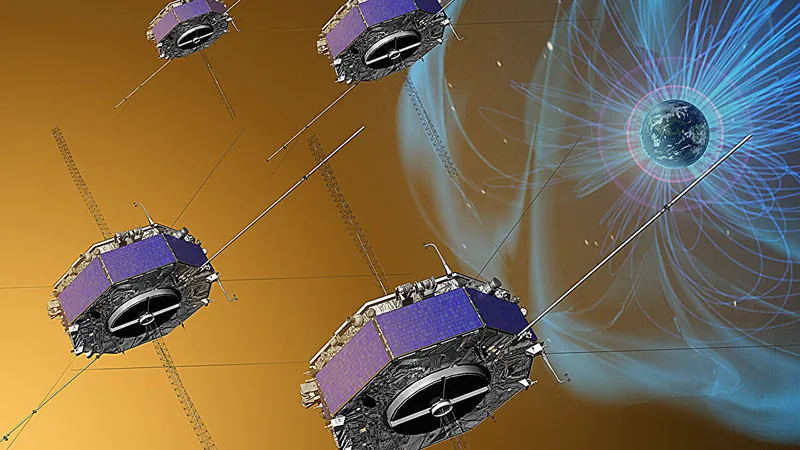
Unlocking the Secrets of Magnetic Reconnection: A New Era of Understanding
2025-04-14
Author: Sophie
What Is Magnetic Reconnection?
Magnetic reconnection is a fascinating phenomenon in which neighboring magnetic field lines break apart and snap back together, creating new field lines. This remarkable process transforms magnetic energy into thermal energy—essentially heat—and kinetic energy, which accelerates particles and generates powerful jets of electrons and ions. It's integral to numerous cosmic events, including solar flares and the awe-inspiring light displays of auroras, as well as practical applications in nuclear fusion experiments.
A Game-Changing Discovery by NASA
A few years ago, NASA's Magnetospheric Multiscale mission revolutionized our understanding of magnetic reconnection by revealing a surprising feat: it can occur with just electron jets—without the need for ion acceleration. This new type of reconnection occurred at a notably high rate, meaning the magnetic field lines came together rapidly. Now, researcher Cheng-Yu Fan and his team have delved deeper into these electron-only reconnection events through groundbreaking simulations.
New Simulations, New Insights
Utilizing a cutting-edge computational technique called particle-in-cell simulation, the research team conducted 12 detailed simulations to uncover the underlying mechanisms of these electron-only reconnection phenomena. Their findings, published in the prestigious journal Geophysical Research Letters, shed light on how these unique events unfold.
Bending the Rules of Physics
The simulations indicated that electron-only reconnection occurs when the magnetic field lines surrounding the electron diffusion area don't curve sufficiently. This lack of bending leads to an undeveloped ion diffusion region. This unusual bending can be evident early on and might persist if the overall area where reconnection happens is smaller than the route that ions take.
Timing is Everything!
Interestingly, the research team discovered that the progress of magnetic reconnection does not synchronize perfectly with the bending of the field lines. A thinner initial current sheet can cause the reconnection rate to peak before the field lines have been fully bent. This leads to scenarios where high reconnection rates are recorded when normalized by ion parameters, yet appear more typical when examined through the lens of electron parameters.
Why It Matters
These exciting insights not only enhance our understanding of the fundamental physics behind magnetic reconnection but also open new avenues for research in space science and plasma physics. As we continue to unveil the mysteries of the cosmos, studies like these pave the way for future breakthroughs in both theoretical understanding and experimental applications.









 Brasil (PT)
Brasil (PT)
 Canada (EN)
Canada (EN)
 Chile (ES)
Chile (ES)
 Česko (CS)
Česko (CS)
 대한민국 (KO)
대한민국 (KO)
 España (ES)
España (ES)
 France (FR)
France (FR)
 Hong Kong (EN)
Hong Kong (EN)
 Italia (IT)
Italia (IT)
 日本 (JA)
日本 (JA)
 Magyarország (HU)
Magyarország (HU)
 Norge (NO)
Norge (NO)
 Polska (PL)
Polska (PL)
 Schweiz (DE)
Schweiz (DE)
 Singapore (EN)
Singapore (EN)
 Sverige (SV)
Sverige (SV)
 Suomi (FI)
Suomi (FI)
 Türkiye (TR)
Türkiye (TR)
 الإمارات العربية المتحدة (AR)
الإمارات العربية المتحدة (AR)